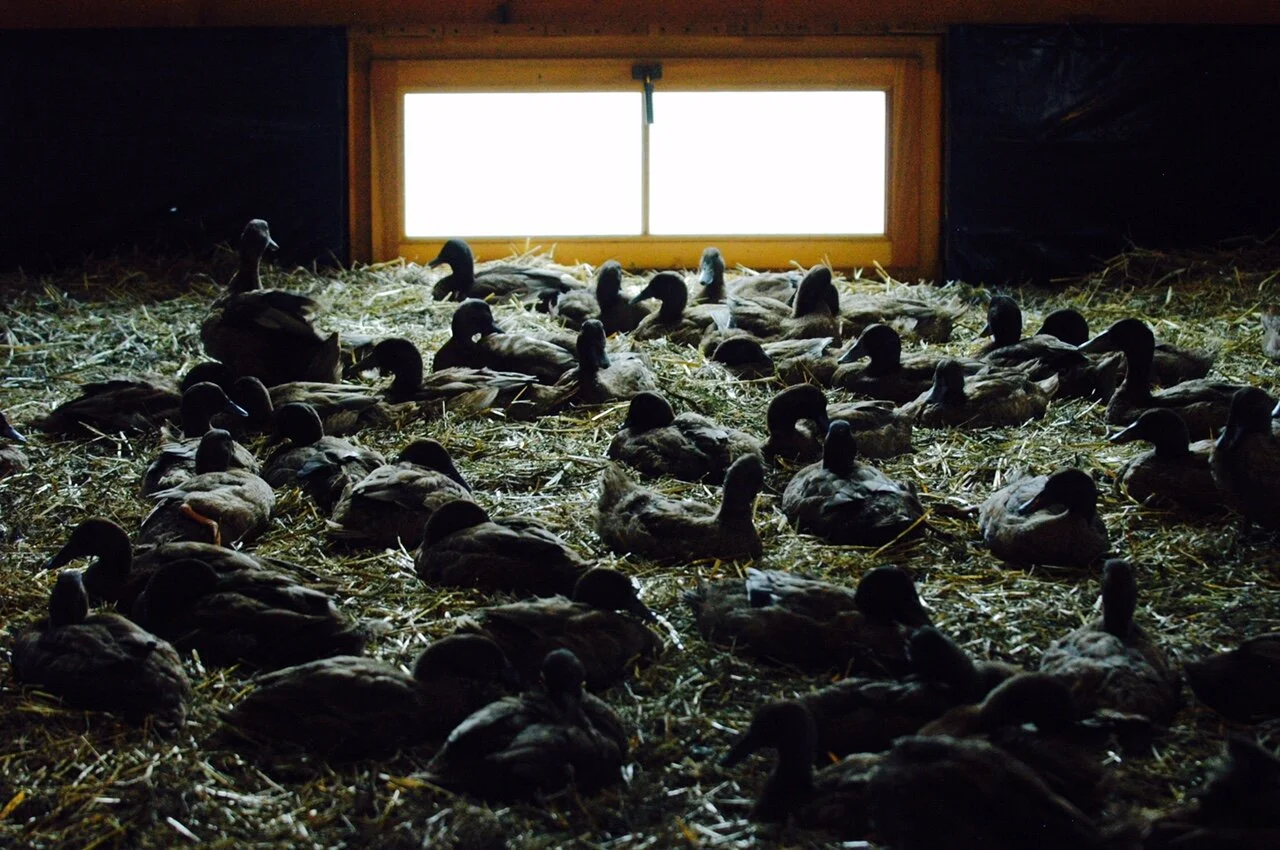To save amphibian lives, "adopt a crossing" in Huntington
A volunteer holds a spotted salamander on a recent big night at Gillett Pond. Photo by John Ely.
For many, a rainy spring night sounds like the perfect opportunity to curl up on the couch with a movie or good book. Go outside, though, and you may come face-to-face with some of Vermont’s most elusive amphibians.
On the night of March 26, groups of volunteers, who included professional herpetologists and young families, headed out to Gillett Pond and other Huntington locations in search of the creatures. Amid high winds and low temperatures, amphibians were slow to appear at first. After rain showers began, however, volunteers saw spotted salamanders and spring peepers crossing Wes White Hill.
When snow begins to melt and air temperatures rise above freezing, many amphibian species come out of hibernation and begin their annual trek to the nearest water source to mate, said Jim Andrews, coordinator for the Vermont Reptile and Amphibian Atlas.
“[Amphibians] want at least good open patches without snow,” Andrews said. “And then [they] want wet roads and temperatures above 32 degrees. The warmer it is, the more diversity and abundance you're going to see. So, if it's 40 or 50 degrees, then you're going to see more stuff.”
Because many amphibian migrations cross roads, amphibians deaths due to motor vehicle traffic are a serious problem. It’s especially concerning because some salamander populations, such as the Jefferson salamander, are dwindling in numbers.
“It's not the road itself. It's the amount of traffic that uses the road. On quiet back roads, amphibians might have little mortality so the population will survive. But on busy roads, there will eventually be enough mortality on the road greater than the production of young and breeding [amphibians],” Andrews said. “The populations will gradually die out on busy roads.”
Hoping to prevent such deaths, the Huntington Conservation Commission (HCC) started an “adopt a crossing” program this year with a $1,059.50 grant from RiseVT. Funds will go to seasonal road signs alerting drivers that amphibians may be crossing in the area.
Residents may also volunteer at crossings to save amphibian lives and collect data. Volunteers sign up for a specific crossing, then on nights when environmental conditions are ideal, they make several visits to record amphibian sightings. (Volunteers record both living and dead amphibians.) Using hands or buckets, they carry living individuals across the road.
At a recent informational meeting, Cindy Sprague, who is a Volunteer Trainer and Coordinator for “adopt a crossing,” described the most common amphibian species in Huntington. These include the spotted salamander, with bright yellow spots on its entire body, as well as the small, tan- or brown-skinned spring peeper.
To avoid harming the amphibians when handling them, Sprague advised volunteers to have wet hands, which helps prevent the amphibians from drying out. In addition, she avoids using hand lotion or sanitizer before handling the creatures as their skins are highly absorbent.
The main goal is to reduce amphibian road mortality. “Our other goal is to educate people about the importance of our ingredients and their natural history,” Sprague said. “Finally, [we want to] encourage people to get outside and stay active.”
Volunteers included families looking for a way to connect with the outdoors and learn at the same time. Steven Ragno, a 36-year-old plumber from Huntington, recently joined “adopt a crossing” with his family. The family took on an eighth of a mile stretch along Mayo Road, where they will keep records of amphibians they find.
“I have a daughter who loves critters,” Ragno said. “We're a whole family who loves nature and the amount of fun that is around Huntington. Frankly, it’s an excuse to get out of the house at the end of the winter.”
Ragno and his family have an amphibian bucket list for this spring, as well. “We want to see some big salamanders,” Ragno said. “We know that there are some rare species like the Jefferson or the blue-spotted… we're hoping to see some of them.”
To sign up as an amphibian crossing volunteer, contact Cindy Sprague (cindys@madriver.com).








